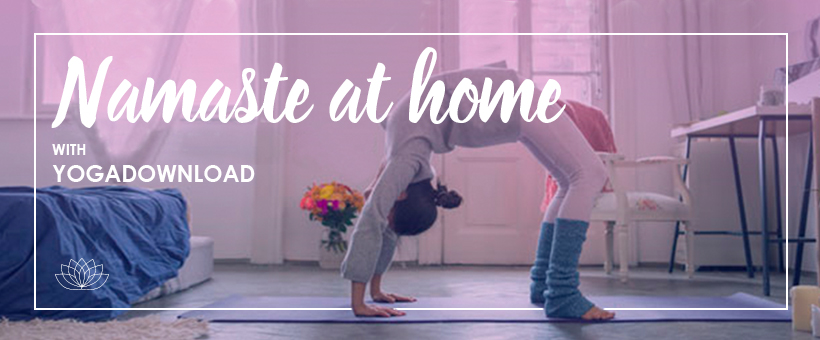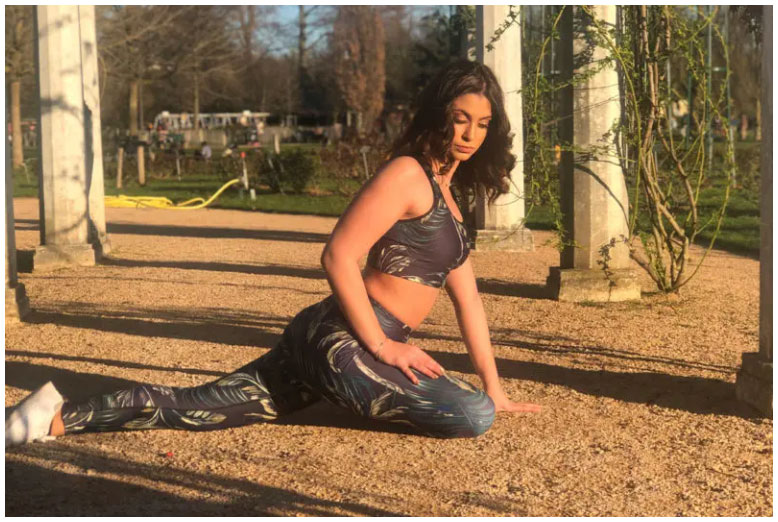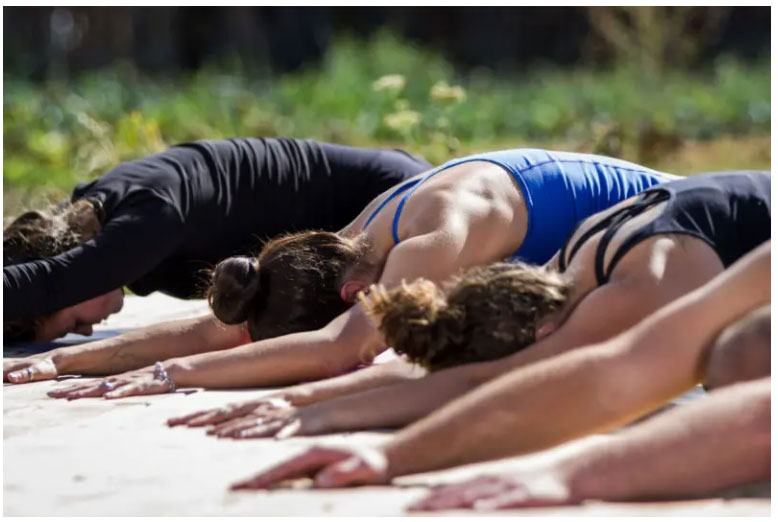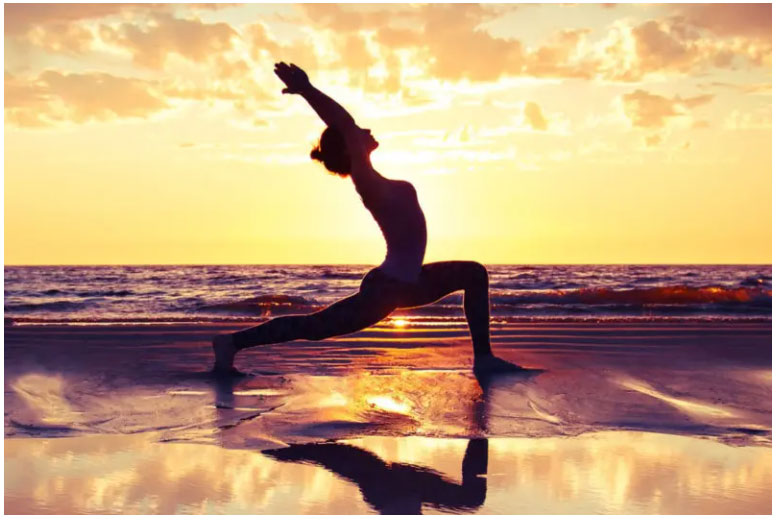Why Do Yoga ?
Sanskrit, the Indo-European language of the Vedas (ancient religious texts of India) gave birth to the literature and technique of yoga.
The Sanskrit word "yoga" has several translations and can be interpreted in many ways. It comes from the root yug and originally meant "to harness", as in tying horses to a vehicle. Another definition would be "to be actively and deliberately carried out". Other translations include "to harness, join or concentrate". Yoga has come to describe a means of uniting, but also a method requiring discipline. A man practicing this discipline is called a yogi or yogin, and a woman practicing yoga is called a yogini.
Yoga comes from an oral tradition, in which the teaching was transmitted directly from teacher to student. The Indian sage Patanjali was credited with this oral tradition in his classic work, the Yoga Sutra, a 2,000-year-old treatise on yogic philosophy, which is a kind of philosophical guide for dealing with the challenges of being human.
By giving advice on how to master the mind and emotions, as well as guidance on spiritual growth, the Yoga Sutra provides the framework upon which all current yoga practice is based. Literally meaning "thread", the sutra has also been translated as "aphorism", which means a statement of truth, formulated in a very precise manner. Another definition of the sutra could be "the concentration of the greatest amount of knowledge in the most concise description possible". From its different images and meanings, yoga seems to resemble a structure made of universal truths.
Different types of yoga
There are several types of yoga. These combine different movements called poses. A certain type may be better suited to your goals and fitness level:
Hatha yoga : This form is very popular. It is known as strength yoga. It focuses on strengthening and purifying the body. It involves physical postures (asanas) and breathing techniques (pranayama).
Iyengar Yoga: This style emphasizes alignment. It is fluid and dance-like. It uses a variety of props such as blankets, blocks, chairs, etc. It is fluid and dance-like. It helps you reach and maintain postures that you might not otherwise be able to do.
Ashtanga yoga: This type of yoga is sometimes called ashtanga vinyasa. It is intense, fast and dynamic. It is designed to develop endurance and strength. You do a series of postures in one continuous, flowing movement. You combine the movements with breathing patterns.
Bikram Yoga: You do this form of yoga in a very warm room, unlike many other types. Bikram yoga involves a set of 26 postures that you practice twice a session. You first do standing and balancing postures. Then you do back bends, forward bends and twisting postures.
Restorative Yoga: This type does not use active postures. Instead, it focuses on the relaxation part.
Kripalu yoga: This is a softer, slower style. It is somewhere between restorative yoga and more vigorous forms.

The benefits of yoga on your brain
Over 90% of people come to yoga for flexibility, stress reduction, health and fitness. However, many students and teachers develop new reasons for practicing yoga, most often for spirituality or self-actualization, or a sense of fulfillment of their potential. It offers a reflection on one's self, the practice of kindness and self-compassion, and promotes self-awareness.
Yet the health benefits are very real. Yes, it can increase your flexibility, improve your balance and lower your cholesterol. A recent study published in the European Journal of Preventive Cardiology shows that yoga reduces the risk of heart disease as much as regular exercise. On average, participants lost several pounds, lowered their blood pressure and reduced their bad cholesterol by 12 points. More and more research is being conducted on how yoga improves health problems, including chronic pain, fatigue, obesity, asthma, irritable bowel syndrome, etc.
While most people intuitively know that yoga reduces depression and anxiety, they are generally surprised to discover that yoga also changes the brain.

Scientific Evidence
A study published in May 2015 in the magazine Frontiers in Human Neuroscience uses magnetic resonance imaging (MRI) to show that yoga protects the brain against the decrease in grey matter volume with age. People with more yoga experience had a brain volume equal to that of much younger people. In other words, yoga may protect your brain from shrinking grey matter as you age.
The protection of brain gray matter volume occurs primarily in the left hemisphere, the side of your brain associated with positive emotions and relaxation. Emotions such as joy and happiness are truly linked to the left hemisphere of the brain during brain scans. This hemisphere is also linked to the parasympathetic nervous system, which provides rest and digestion, as well as relaxation.
This neuroprotective effect has also been found in brain imaging studies in meditating individuals. In some areas of the brain, 50-year-old meditators were found to have the same volume of grey matter as 25-year-olds.
These changes in the brain can occur within a few months. One study found brain changes after only eight weeks of a consciousness-based stress reduction program. Regions of the brain involved in memory or learning, but also in cognition, showed some development. On the other hand, the areas of the brain responsible for fear, anxiety and stress have decreased.
An ultimate goal
However, when you think about it, the practice of yoga does not have the primary goal of changing the body, the brain, or increasing levels of happiness and joy. It is about the transcendence of all these things. In a culture where we rush all day long, constantly trying to change our health, our body or our emotions, or to plan our future, yoga opens the possibility of connecting to what we already have, to what we already are.
People are frequently limited in their practice because they feel they are not "flexible enough". But yoga is not about achieving the perfect pose. So, don't hesitate to change the pose to feel comfortable in your own body. Yoga is about removing all judgment and letting ourselves be present and connected to who we are now.
Buddhist teacher Pema Chodron explains:
"The practice is not about trying to throw yourself away and become something better. It is about befriending what we already are. The basis of the practice is you or me, or whoever we are right now.
We recognize our ability to relax with the clarity, the space, the open consciousness that already exists in our mind. We experience moments when we feel here, simple, direct and unencumbered. "

Non-exhaustive list of the benefits of yoga
In addition, here is a non-exhaustive list of benefits for your body and mind:
• Reduced risk of injury: Each yoga pose targets specific muscles. This allows you to increase your flexibility and reduce the risk of injury.
• Stress Reduction: Yoga can help to calm the mind and reduce stress levels. It does this by focusing the mind on the present moment and movement.
• Increased concentration: An important part of yoga is rhythmic and focused breathing.
• Connection between body and mind : Yoga requires that you focus all your energy on each movement or pose with precision. This can help you feel that the mind and body are working together.
• Gain in strength and endurance: More vigorous styles promote strength and endurance.
• Improved balance and stability: Balance poses require you to use your core muscles. This can help improve your overall stability.
• Improved posture: Postures strengthen and open up areas such as the shoulders and upper back muscles. This can help you maintain good posture.
• Developing body awareness: Yoga requires you to contract or relax certain muscles in each pose. This can help you become more aware of your body's strengths and weaknesses.
How to get started
It is easy to find all kinds of yoga classes. Ask at the centers near you, but also at gyms, dance studios and fitness clubs. You can also check the teacher directory for regional and national listings of yoga teachers and associations.
It's important to find the style of yoga that's right for you. It is difficult to know what a class looks like until you attend. Even when two teachers use the same terms to describe their classes, they can be very different.
It's a good idea to take a class with an experienced teacher. Tell him or her about any health problems you may have, such as high blood pressure or arthritis, but also about any injuries or physical problems. A good teacher will know which exercises are best for you and will tell you which poses to avoid.

Conclusion on why do yoga
After all this information, you'll probably think, "So why am I going to practice yoga?". The answer can be complex and personal, but it can also be simple and universal: because I want to be there. Because I want to be present not only on my mat, but also for myself and others, the community around me.
And you, what benefits do you derive from your yoga sessions?


